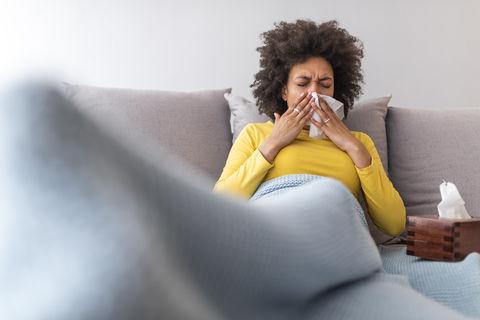Fall allergies, COVID-19, and irritation from wildfire smoke can cause similar symptoms.
- Overlap of symptoms from allergies, COVID-19, and wildfire smoke can make it difficult to know which you’re experiencing.
- Treatment for each is different.
- Exposure to wildfire smoke can increase susceptibility to respiratory infections like COVID-19.
With more than allergens circulating around this fall, it can be difficult to tell what’s causing the symptoms you may experience, like sore throat, runny nose, and headache. Could these symptoms be signs of COVID-19, irritation from wildfire smoke, or simply fall allergies?
“If you take a step back and put the whole picture into perspective, it can be easier to tell the difference. For instance, smoke exposure can be more temporary and include more burning than itching, which typically comes with allergies,” Dr. Tina Sindher, allergist at Stanford Health Care, told Healthline.
However, Sindher adds that some people with severe seasonal allergies can present symptoms similar to those of a viral infection like COVID-19.
“They may have a mild fever, and that’s when it gets confusing,” she said.
To make sense of it all, here’s a breakdown of the differences between each and what you can do about it.















